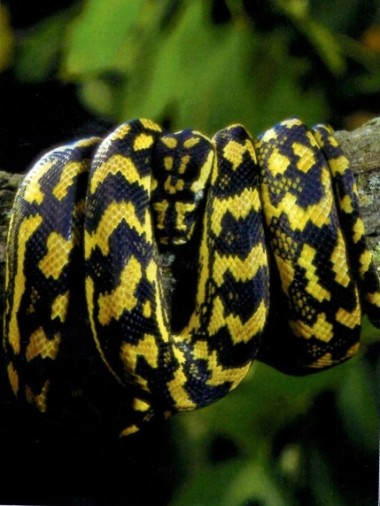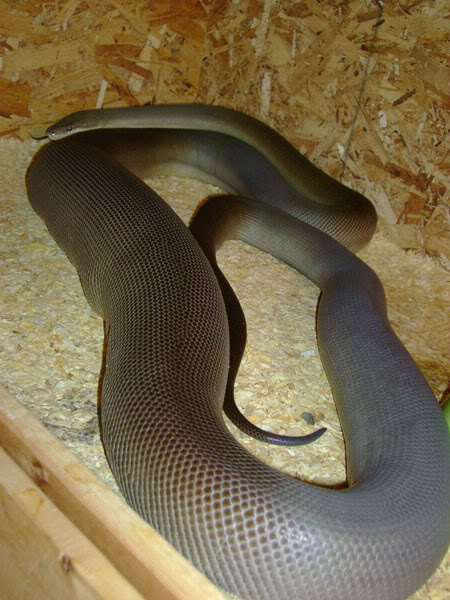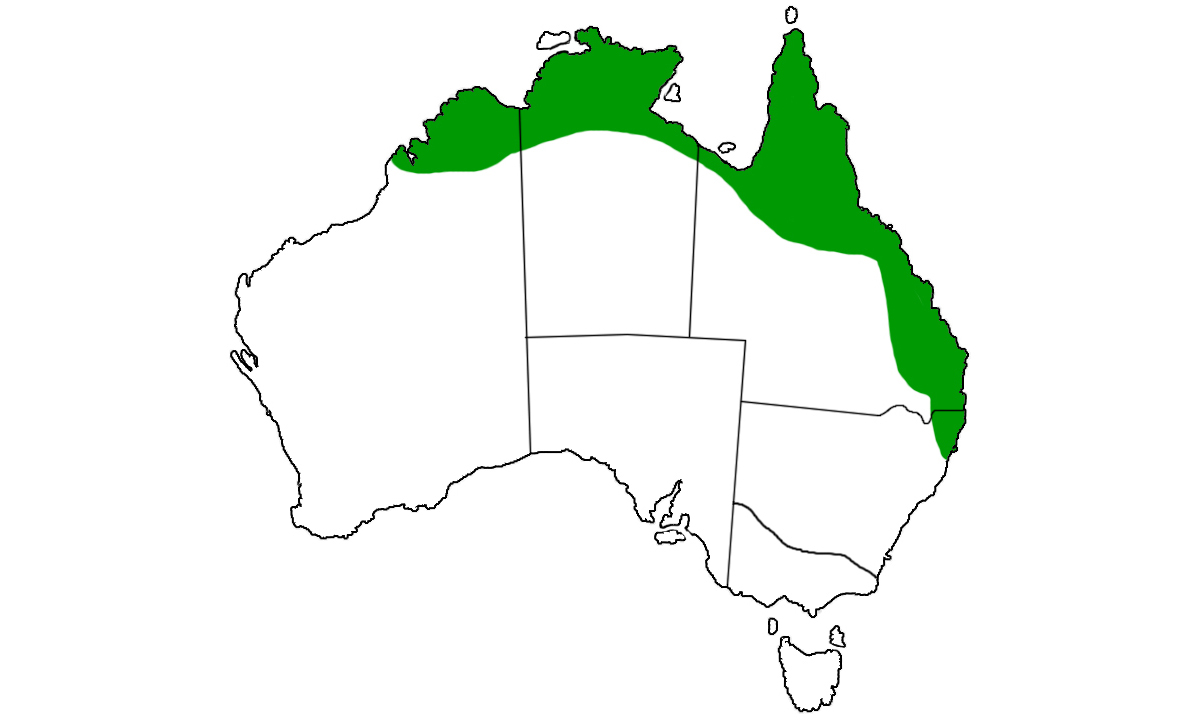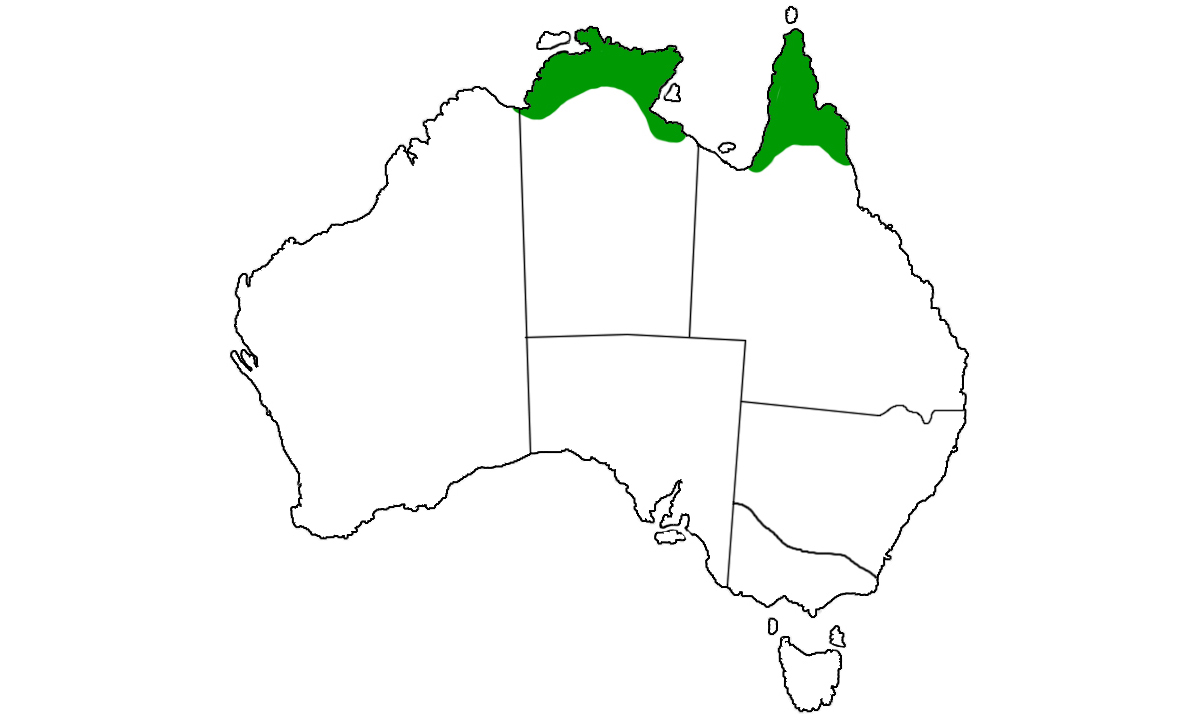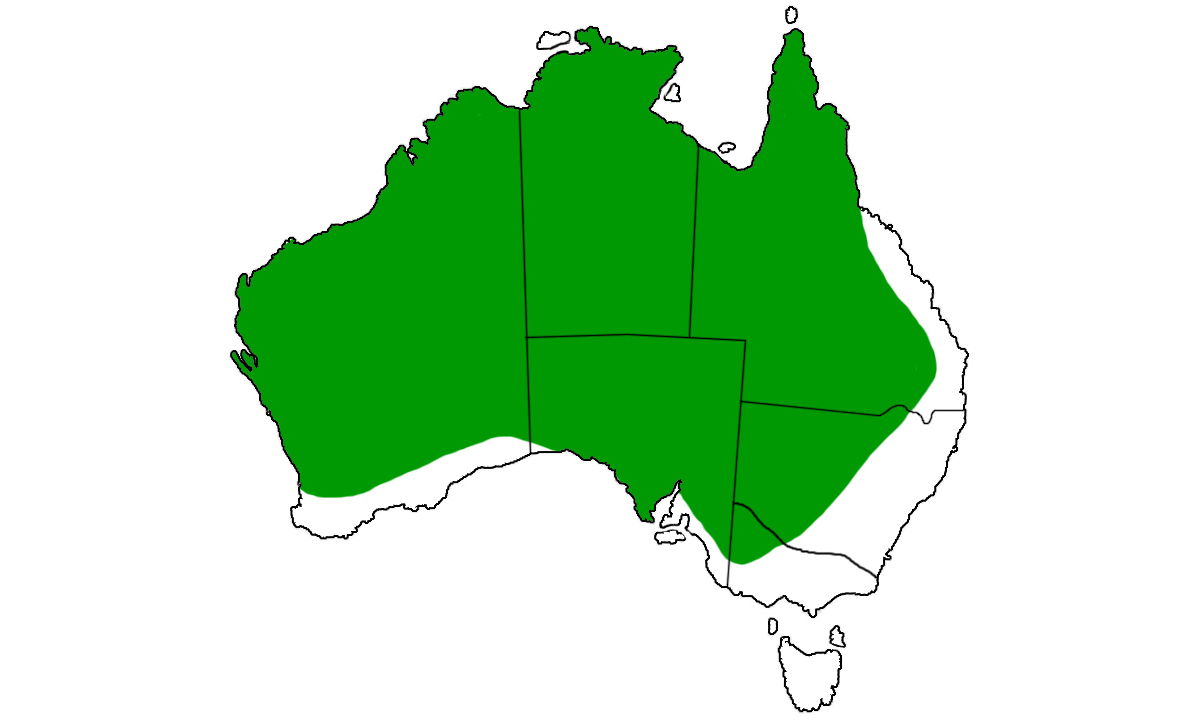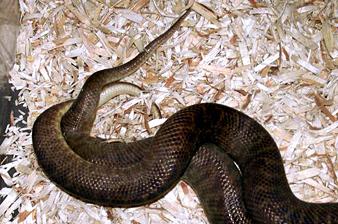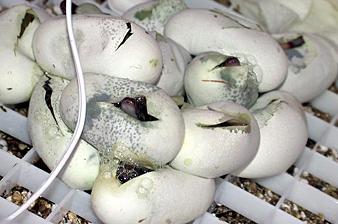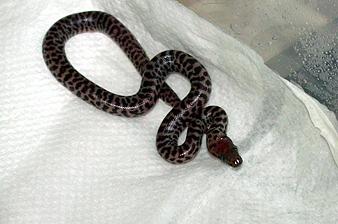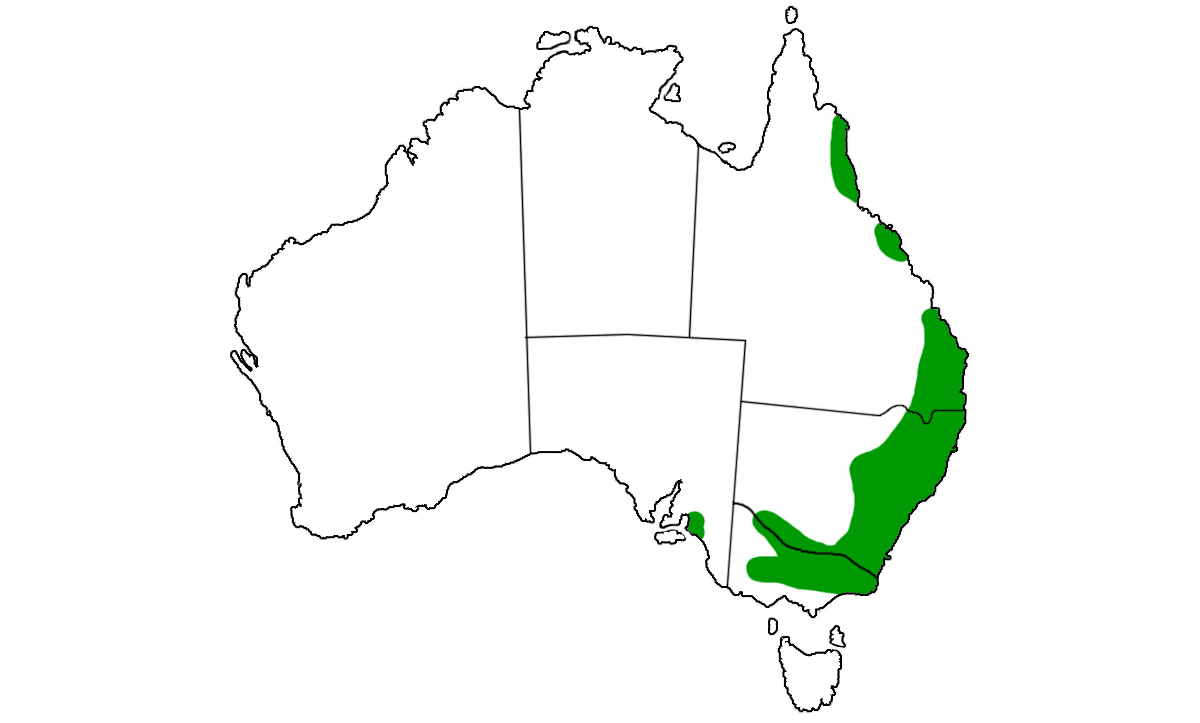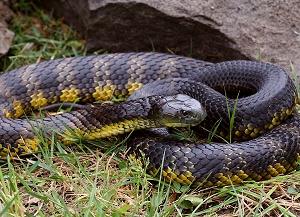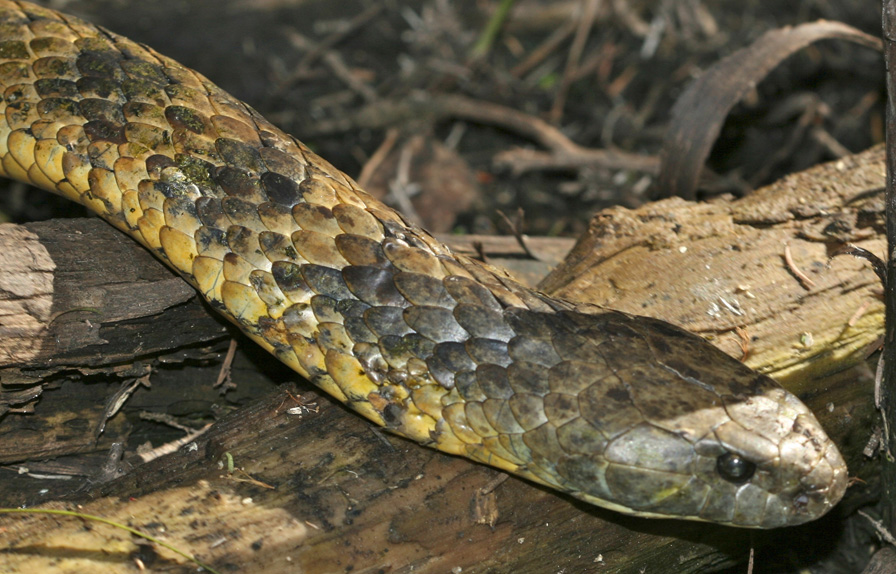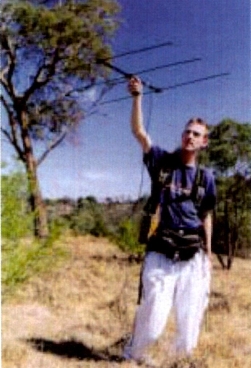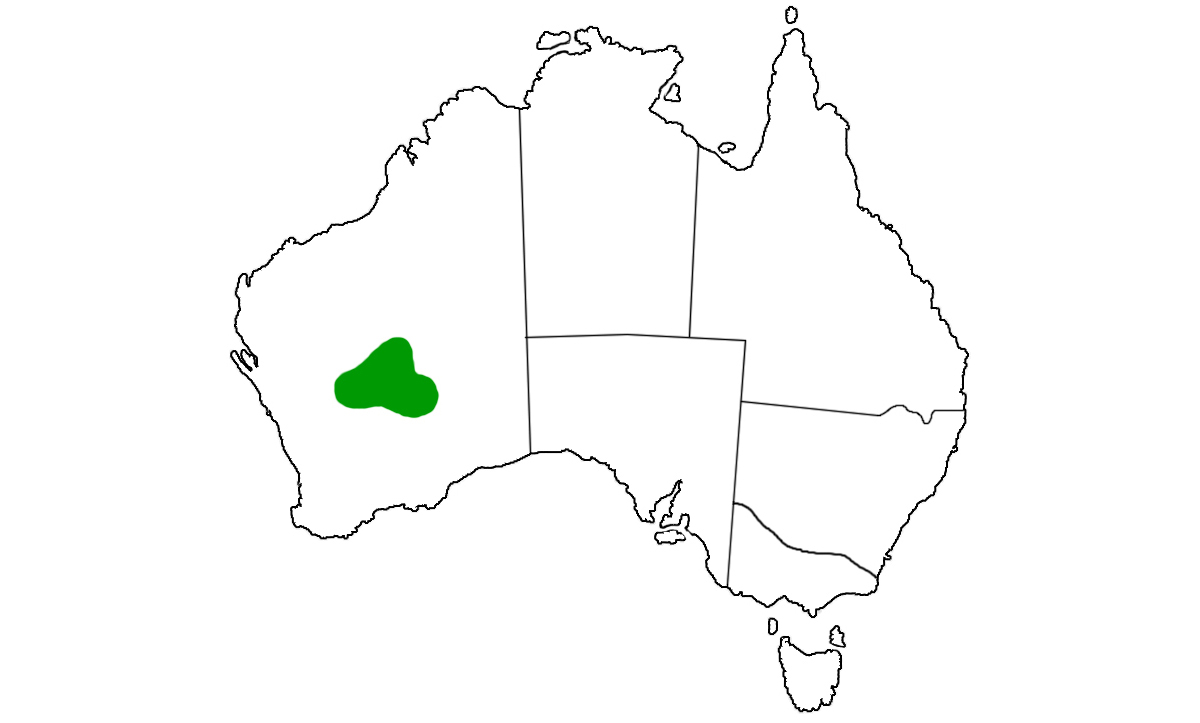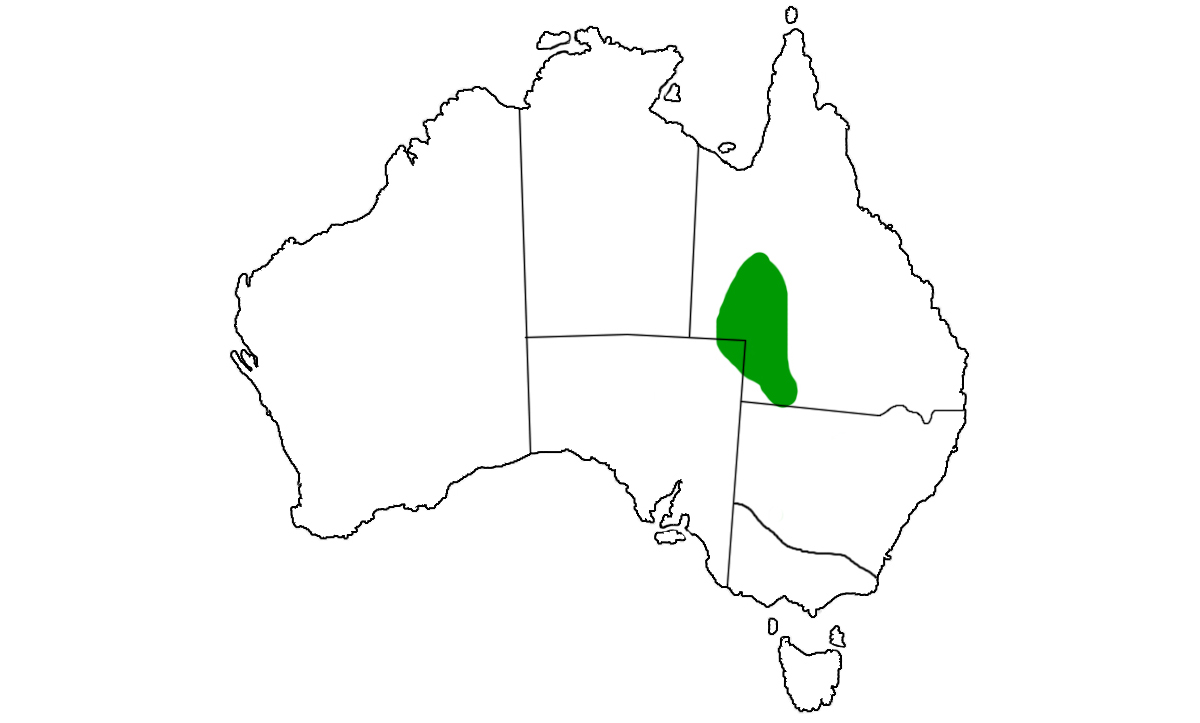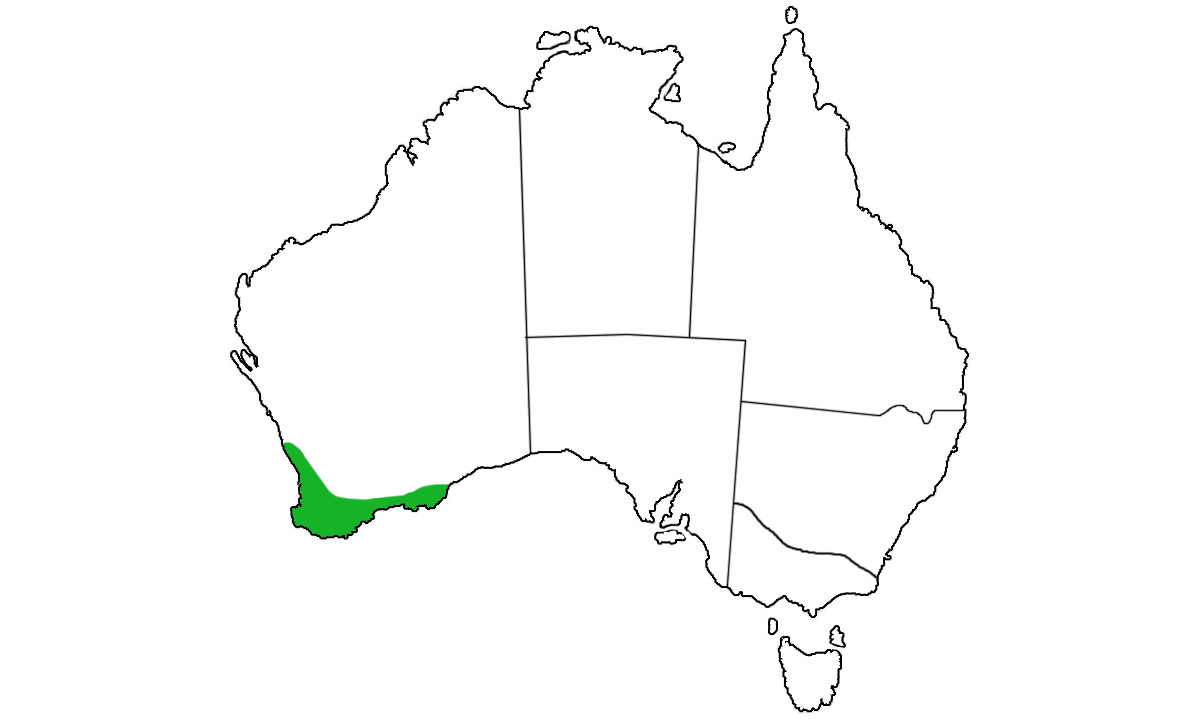Carpet Pythons in Captivity and Nature
/Carpet Pythons - these Australian beauties weave a spell over all who see them.
Carpet Pythons In The Wild
by Charles Acheson
Australian carpet pythons are unquestionably popular pythons among the general public, and most Australians have at some stage seen one of them in the wild. Usually, these people can recollect seeing one while on holiday - often, unfortunately, as roadkill. Throughout much of Australia, people in the countryside report seeing carpet pythons on ceiling beams in old sheds, in chicken roosts or even draped over their balconies.
As a "Sydneysider", I regularly get calls from people in the suburbs adjoining bushland, asking me to remove diamond pythons (Morelia spilota) from their dwellings. I've found carpets under residents' roofs and even basking at poolside, enjoying the morning sun. Ironically, the majority of herpetologists who live in diamond python areas have seen relatively few in the wild. Like the eastern blue-tongued skink (Tiliqua scincoides), these pythons are more often seen on the fringes of suburbia than they are when purposely sought in the wild.
Carpet pythons are usually seen in the wild, either basking during the cooler months in an attempt to get warm, or at night during the summer. It is quite common to see carpet pythons in Northern Australia basking in "windows" of sunlight on the forest floor, or with a few coils hanging out of a tree hollow.
Types Of Carpet Pythons
 Several species of carpet python have been identified across Australia, including Morelia spilota, M. macdowelli, M. variegata, M. cheynei, M. imbricata, M. metcalfei and M. bredli. The "type species" in the carpet python is actually the diamond python; this is due to its having been first described rather than to any revolutionary theory.
Several species of carpet python have been identified across Australia, including Morelia spilota, M. macdowelli, M. variegata, M. cheynei, M. imbricata, M. metcalfei and M. bredli. The "type species" in the carpet python is actually the diamond python; this is due to its having been first described rather than to any revolutionary theory.
Morelia spilota has a limited range on the coast of New South Wales (NSW), from Port Macquarie on the midcoast to the border of Victoria in the south. Considered by some to be one of the most beautiful pythons in the world, the diamond python varies considerably throughout its range. It inhabits dry and wet sclerophyll forests and sandstone escarpments throughout its range.
In general, it exhibits less patterning in the south, with increasing degrees of mottled pattern as it reaches its northern extralimital range. The juvenile diamond is colored like the carpet python as a neonate and develops its "diamond" pattern as it reaches maturity. Around the midcoast of NSW, the carpet/diamond distinction becomes vague. Often the animals are clearly a mixture of both forms, ranging from predominantly carpet to mostly diamond. This coastal area is officially known to have natural populations of hybrids. These animals are fertile and reproduce readily in captivity.
Morelia macdowelli inhabits southeast Queensland and finds its way down into NSW, to the "hybrid" area of the mid-coast. The "coastal carpet" is the biggest of the carpet python species, occasionally reaching lengths nearing 10 feet and regularly attaining about 8 feet. It is common within its range and does not appear to be secretive like the diamond python. It exhibits a dark, mottled mustard, brown and black pattern, in general, which is an extremely effective camouflage. Once again, these snakes inhabit forested areas.
 Morelia variegata, the top-end carpet python, is the most widespread of the carpet pythons, ranging from Cape York in the north of Queensland to the Kimberley Ranges of northern Western Australia. The types of forest that these animals can be found in is variable. Within their range they can be found marauding in most habitat areas. This species' coloration is often lighter and more colorful than its southeastern relative's.
Morelia variegata, the top-end carpet python, is the most widespread of the carpet pythons, ranging from Cape York in the north of Queensland to the Kimberley Ranges of northern Western Australia. The types of forest that these animals can be found in is variable. Within their range they can be found marauding in most habitat areas. This species' coloration is often lighter and more colorful than its southeastern relative's.
Morelia cheynei, or the jungle carpet python as it is more commonly know, is a very distinctive creature not only because of its striking coloration, but also because of its nature. The jungle carpet comes in two main color phases: the cream and brown phase (less well known) and the spectacular and popular gold and black phase. These animals predominate in the Atherton Tablelands behind Cairns in Queensland, making their way in some areas to the coast. Within most of its range the winter overnight temperatures can be in the low-30-degree Fahrenheit range. Strangely, they are occasionally seen in undulating farmland, as these areas were once regal stands of rain forest. Along with its striking coloration, the jungle carpet is also known for its secretive, sometimes "snappy" nature. Herpetologists have found this snake to be an occasionally finicky feeder, particularly straight out of the wild.
Morelia imbricata, or the southwestern carpet, has, as its name implies an imbricated pattern (that is, its scales appear to overlap, like roof tiles). It is found in Western Australia to the south and on some islands off the southern Australian coast.
Morelia metcalfei, the Murray/Darling carpet, is named after the two rivers that transect the region in which it is found. This species inhabits areas adjacent to these rivers in Victoria, NSW and South Australia. It is a smallish python, rarely exceeding 6 feet, and is known for its good temperament. Its creamy mottled pattern, particularly around the head, is clearly different from its counterparts. This creamy gray coloration continues down the dorsal surface in blotches.
 Morelia bredli is a striking python, distinctly different in its coloration. Isolated by thousands of miles of desert and not commonly seen, it inhabits rocky areas and dry riverbeds of central Australia, where it lives in hollows or rock crevices. This snake exhibits some magnificent shades of red and is favourite of many herpetologists.
Morelia bredli is a striking python, distinctly different in its coloration. Isolated by thousands of miles of desert and not commonly seen, it inhabits rocky areas and dry riverbeds of central Australia, where it lives in hollows or rock crevices. This snake exhibits some magnificent shades of red and is favourite of many herpetologists.
All the carpet python species eat a variety of food items, including mammals, birds and bats, as well as lizards. Neonates in captivity prefer to eat small lizards, although they can be coaxed into eating pinkies quite readily.
Carpet Pythons: Winter In The Wild
In general, carpet pythons seek north-facing rocky outcrops, tree hollows or fallen timbers in which to spend the winter months. During the overnight drop in temperature they will withdraw into their crevice or hole to retain their body heat as possible.
A common way to see carpet pythons in Queensland is to walk along the "windrows." These are stands of trees that have been felled by property owners in the process of clearing lands. These trees are then bulldozed into rows ready burning. Often, windrows are left untouched for years and become microhabitats for many snakes and other animals.
During winter, one might discover the coils of a carpet python extending out of a burrow within the windrows, soaking up some sun. This lends itself to effective thermoregulation as the snake can simply maneuver itself around from time to time to maintain its exposure and vulnerability. These areas are also a haven for rodents and other mammals that provide food for carpet pythons and a multitude of other predators.
 Old barns are another wintertime "hangout" for carpets. In Australia, corrugated iron is still a primary roofing material. Carpet pythons regularly inhabit the roofs of barns where they use the sheet iron as a sort of radiant thermal pad. Many times, I have entered an old shed to see loosely wrapped coils of carpet pythons draped over beams. Usually, these farm sheds are quiet places and harbor a ready supply of rats and bats as food items. Even on an overcast winter day in the Atherton Tablelands of northern Queensland, when the daytime temperature may be only 50 to 60 degrees Fahrenheit, it only takes a few minutes of sun on some sheet iron roofing to allow a carpet python to warm up markedly.
Old barns are another wintertime "hangout" for carpets. In Australia, corrugated iron is still a primary roofing material. Carpet pythons regularly inhabit the roofs of barns where they use the sheet iron as a sort of radiant thermal pad. Many times, I have entered an old shed to see loosely wrapped coils of carpet pythons draped over beams. Usually, these farm sheds are quiet places and harbor a ready supply of rats and bats as food items. Even on an overcast winter day in the Atherton Tablelands of northern Queensland, when the daytime temperature may be only 50 to 60 degrees Fahrenheit, it only takes a few minutes of sun on some sheet iron roofing to allow a carpet python to warm up markedly.
In warmer areas - for example, Darwin, in the top of the Northern Territory, where the overnight lows during winter may only drop to the high 60s and the days may still be over 80 degrees - carpet pythons are more likely to be seen loosely coiled on the forest floor or in hollows.
In spring, most readily found carpet pythons are male, due to their tendency to patrol the forest floor looking for mates during breeding season. Sub-adult specimens are often mobile and easily discovered, as they are yet to establish territories. Females are more sessile in nature, although they will move to various habitats throughout the year to facilitate thermoregulation and egg laying.
Females usually lay eggs on the floor or in hollows and then carefully guard them for the duration of the incubation process. A female may release herself from the clutch in the early morning to bask and then return to her eggs. Depending on the species and the size of the individual, a clutch may number as few as six (in the case of young adult M. cheynei) or more than 20 eggs. While coiled around the eggs, the female can "shiver up" her body temperature above ambient to maintain an optimal temperature for the eggs (as mentioned in the captive care section).
There have been sightings of aggregations of diamond pythons in the spring, where numerous males will collect around a single female in an attempt to mate with her. According to those who have witnessed such spectacles, it can come as quite surprise to an unsuspecting bushwalker, although I must stress that this is not commonly seen.
Generally hardy in captivity, the carpet python is the species that's most commonly kept by Australian hobbyists.
Carpet Pythons In Captivity by Bob Clark
Carpet pythons are slender, medium-sized pythons with prehensile tails. They have proportionately large heads and narrow necks. Carpet pythons have an extensive range across Australia and in neighboring New Guinea and Irian Jaya. Adults range from 4 to 9 feet or more, depending on type. There is also considerable variation in color and pattern among the different varieties and within each type. They make great captives and have become very popular in recent years.
Popular Python
 A major reason for their popularity is the carpet pythons seem especially well suited to life in captivity. The very large number of this species currently being kept and bred in this country is a testament to this. I got my first pair of carpet pythons in 1980, but before that time, I'd never seen a live one!
A major reason for their popularity is the carpet pythons seem especially well suited to life in captivity. The very large number of this species currently being kept and bred in this country is a testament to this. I got my first pair of carpet pythons in 1980, but before that time, I'd never seen a live one!
Although most of the non-native reptiles that became established in captivity were, and continue to be, imported in large numbers, this is not true for the carpet pythons. Australia has not allowed the export of its wildlife since the 1960s. The animals in captivity in this country today are descended from only a very few animals that have found their way to America, probably as imports from other countries. The fairly recent availability of the Irian Jaya carpet pythons is more typical of the way new types of pythons become established in captivity. First a few are imported, followed by increasing numbers as the buying public becomes familiar with them. Eventually, some of the animals acclimate well enough to breed and these form the basis for the captive-produced population.
Part of my job as a breeder and seller of snakes is to answer questions and give advice on how to care for animals I sell. I noticed recently that even though I deal with many species of boas and pythons, the information I gave was remarkably similar for all of them. Most members of the family Boidae thrive in captivity under fairly similar conditions. Carpet pythons can be maintained under the same conditions that are suitable for most other boas and pythons.
Enclosure Basics
Let's start with the snake's cage. The enclosure serves several purposes. First, and most obvious, is to keep the snake confined. Second, the cage must comprise an environment suitable for the snake. The enclosure must also allow easy viewing of its inhabitant. As long as the cage fulfills these requirements, the specifics of its construction are not important.
I favor some of the plastic cages with sliding glass fronts. These cages are easy to clean, readily available - and someone else has made them already! I'm not especially handy, so the ready-made aspect really appeals to me. Those with ability in this area can construct enclosures from plywood. Paint the wood and seal the joints to help maintain humidity. Allow for ventilation, but be aware that too much ventilation will make it difficult to maintain a proper environment inside.
I like to have a couple of small vents in the sides of the cage, as vents place on the top of the cage can cause the cage to lose heat unnecessarily. Adding additional heat not only wastes energy, but it also dries the cage's interior. Glass aquaria are adequate if they are fitted with a solid top; screen tops are generally not suitable because they do not retain moisture. Act Natural
 We keep snakes because we like them. We are interested in their behavior and all aspects of their lives. For this reason, I like enclosures with a large viewing area. The snake's perspective on this, however, may differ a little. In the wild, a snake may not spend much of its time out in the open during daylight. This exposes the animal to predators and makes its search for food less effective. Although our captive snakes are not in the wild, they are still programmed by instinct to behave in and react in certain ways. Departures from a snake's expectations or "programming" may stress the animal and ultimately interfere with its health.
We keep snakes because we like them. We are interested in their behavior and all aspects of their lives. For this reason, I like enclosures with a large viewing area. The snake's perspective on this, however, may differ a little. In the wild, a snake may not spend much of its time out in the open during daylight. This exposes the animal to predators and makes its search for food less effective. Although our captive snakes are not in the wild, they are still programmed by instinct to behave in and react in certain ways. Departures from a snake's expectations or "programming" may stress the animal and ultimately interfere with its health.
A large viewing area is great for us; for the snake, however, the loss of privacy may be a source of excessive stress. Providing the snake with a place to conceal itself is a compromise that can work for both parties. A snake that feels secure in its cage will be more likely to exhibit normal behaviour, including feeding and even breeding, if given the opportunity. Many husbandry and acclimation problems can be traced back to improper caging.
How Big Is Big Enough?
The size of the cage depends on the size of the snake. But contrary to popular opinion, bigger isn't always better. I start my baby carpets in plastic containers measuring 13 inches by 7 inches by 3 inches. It is easier to maintain a warm, humid environment for the little snakes in small enclosures, and it's more likely that they will have frequent contact with food items during their first few feedings. Larger snakes will require larger cages, of course. Most adult carpets will be comfortable in a cage measuring 48 inches by 24 inches by 18 inches.
As a commercial producer of reptiles, I have objectives different from most snake keepers', but as long as the minimum requirements are met, the snakes do well. At my facility, accommodations are fairly Spartan. Enclosures are the minimum acceptable size and sparsely furnished to say the least: Each size has a water bowl and a hide box, and that's all. Even under these conditions, the snakes will thrive and breed.
Temperature and Humidity
 Carpet pythons, like most boas and pythons, are from tropical areas. They require conditions of temperature and humidity that are higher than most of us would consider comfortable in our homes. To keep them successfully in captivity, we need to provide them with the proper conditions. This will, in most cases, require supplemental heat in the enclosure. Cages can be heated by a variety of means, including light bulbs, heat pads or tape, or ceramic heaters. As long as the proper temperatures are provided, the heating method doesn't really matter.
Carpet pythons, like most boas and pythons, are from tropical areas. They require conditions of temperature and humidity that are higher than most of us would consider comfortable in our homes. To keep them successfully in captivity, we need to provide them with the proper conditions. This will, in most cases, require supplemental heat in the enclosure. Cages can be heated by a variety of means, including light bulbs, heat pads or tape, or ceramic heaters. As long as the proper temperatures are provided, the heating method doesn't really matter.
In the wild, snakes can choose a desired temperature. A snake seeking warmth can bask, for example. A snake that wants to cool off can retreat to the shade or to a burrow. We can give captive snakes some choices as well. By placing the heat source on one end of the enclosure it is possible to provide the snake with the maximum thermal gradient. The snake can choose a position near the heat source if it wants to be cooler. A temperature range of 80 to 90 degrees Fahrenheit is optimal.
In some cases, the heat source itself will be much warmer than 90 degrees. The temperature directly over a heat pad or under a light bulb may be much warmer. As long as the snakes can retreat to a cooler place, there is benefit in making the choice available.
 Although we must, at minimum, reproduce the essential aspects of a snake's habitat to be successful in maintaining it, reproducing some of the non-essentials might enhance the captive experience for both the keeper and the kept. Carpet pythons will utilize a cage's vertical dimension if given opportunity. Providing branches for climbing makes watching the snakes more enjoyable, and I like to think that the snakes think it's a good thing as well. variously sized branches, logs for hiding and artificial foliage might serve to make the snake's environment more attractive, but they make it more difficult to service the enclosure and keep it clean. Naturally planted vivaria with soil and live plants are nearly impossible to maintain for snakes the size of carpet pythons.
Although we must, at minimum, reproduce the essential aspects of a snake's habitat to be successful in maintaining it, reproducing some of the non-essentials might enhance the captive experience for both the keeper and the kept. Carpet pythons will utilize a cage's vertical dimension if given opportunity. Providing branches for climbing makes watching the snakes more enjoyable, and I like to think that the snakes think it's a good thing as well. variously sized branches, logs for hiding and artificial foliage might serve to make the snake's environment more attractive, but they make it more difficult to service the enclosure and keep it clean. Naturally planted vivaria with soil and live plants are nearly impossible to maintain for snakes the size of carpet pythons.
Feeding and Breeding
Captive carpet pythons eat the full range of available warm-blooded food items. Baby carpets can be started on pinkie or fuzzy mice. As the snakes grow, they will eventually take adult mice, small rats and eventually large rats. Some of the larger individuals will take small rabbits.
 Generally, if a baby carpet can eat a couple of pinkies it can easily take a fuzzy mouse. If it can eat more than one fuzzy mice it can probably take a weanling mouse and so on, until you are offering the largest rat. I don't worry much about trying larger and larger food items. It it's too big, the snake won't it eat, and no harm done.
Generally, if a baby carpet can eat a couple of pinkies it can easily take a fuzzy mouse. If it can eat more than one fuzzy mice it can probably take a weanling mouse and so on, until you are offering the largest rat. I don't worry much about trying larger and larger food items. It it's too big, the snake won't it eat, and no harm done.
Often the snakes don't know either and try to eat something that is too big for them. We all learn as we go.
Breeding carpets is simple and straightforward. As with most boids, they respond well to a slight drop in temperature at night in the fall. Copulation occurs between sexually mature animals throughout the winter. In my facility, carpets lay eggs in April and May; the eggs hatch in June or July. Clutch size varies from 6 eggs to 25 or more. Incubation time is relatively short for pythons, lasting 55 days or less. Carpet pythons are what we humans would classify as "good mothers." Females coil around their eggs during the entire incubation period, leaving only occasionally to bask.
Carpets are able to increase their body temperature during incubation. The process of shivering thermogenesis is similar to shivering humans: Small muscle contractions generate heat that is used to incubate the eggs. Carpet pythons may also bask during the incubation period, absorbing heat from the sun and then transferring it to eggs.
 Even though they are cold-blooded animals, female carpet pythons can keep their eggs at a fairly constant temperature throughout incubation. Alternately, eggs can be incubated artificially in damp water vermiculite at 90 degrees Fahrenheit. Good results can be obtained with either method. If the necessary temperature and humidity requirements are met, the eggs will hatch. Hatchling carpets are about 15 inches long.
Even though they are cold-blooded animals, female carpet pythons can keep their eggs at a fairly constant temperature throughout incubation. Alternately, eggs can be incubated artificially in damp water vermiculite at 90 degrees Fahrenheit. Good results can be obtained with either method. If the necessary temperature and humidity requirements are met, the eggs will hatch. Hatchling carpets are about 15 inches long.
These pythons make great captive subjects and are becoming increasingly available in the pet trade. Carpets can be obtained in reptile specialty stores or from any of the many breeders of the species. Carpet pythons are interesting and attractive animals.

